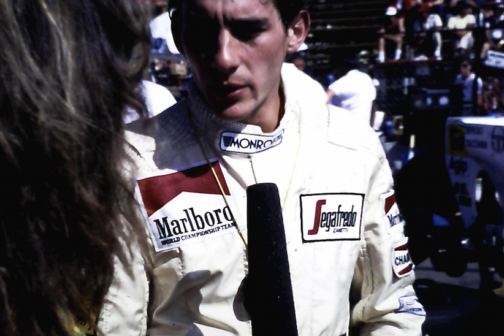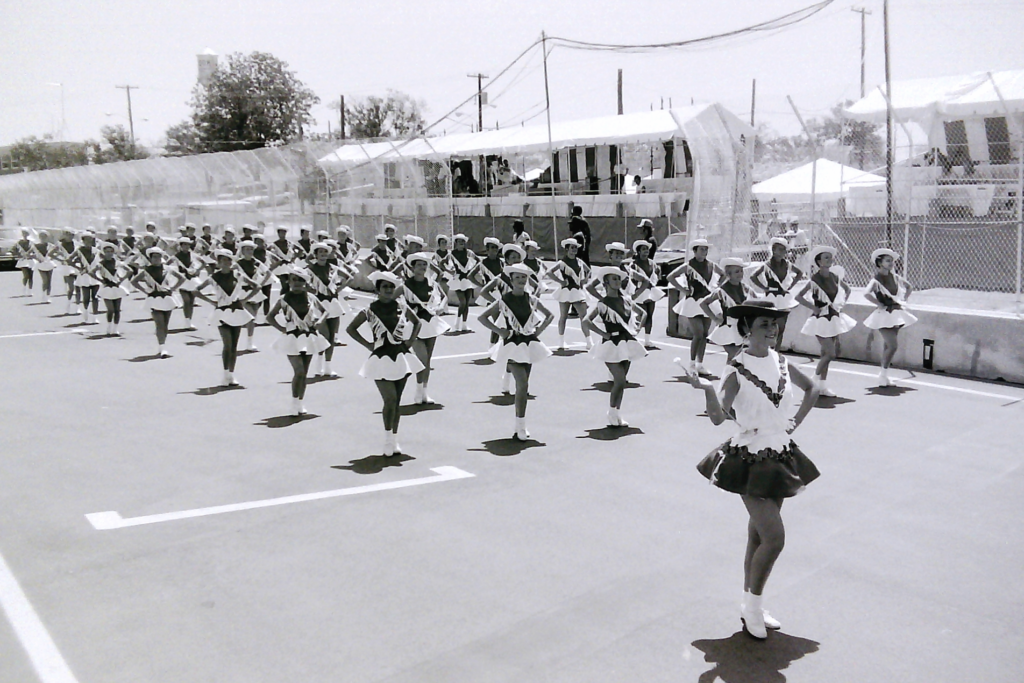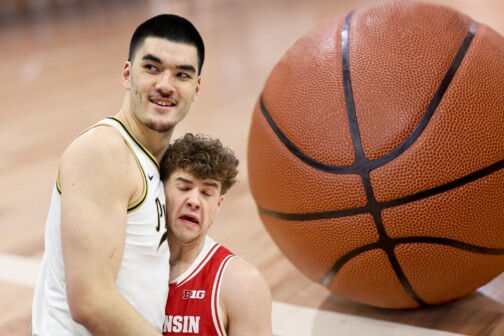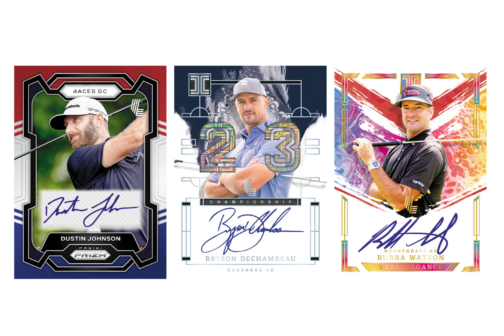It was far from the only sign that things had gone terribly wrong on the track at the 1984 Dallas Grand Prix, but it probably was the best one. Nigel Mansell, who entered the race in the pole position, was out of his Lotus-Renault, pushing the car.
The cars that drove around Fair Park that July morning and afternoon were not as advanced as the aerodynamic masterpieces that will whiz around the Circuit of the Americas in Austin this weekend for Formula 1’s United States Grand Prix. But they were still built to go fast and be operated using an accelerator and a brake rather than manpower.
Yet there was Mansell, using every bit of strength to will his car and its busted gearbox across the finish line. Ultimately, he couldn’t withstand the Dallas heat. He collapsed before he could muscle his machine over the line.
Mansell was hardly the only one who struggled with the 100-plus-degree temperatures that day. Although 26 drivers started the race, only eight were credited with a successful finish. One of them, somehow, was Mansell. Two more finished well behind winner Keke Rosberg on the lead lap.
“It was definitely the hottest Grand Prix I ever participated in,” Eddie Cheever Jr., a driver who didn’t finish the race, recalled in an interview this week. “I remember it just being incredibly tough, a really hot race, a lot of problems with the cars because of the heat. And the asphalt was coming up because it was just so damn hot. It was unreal.”
Somehow, organizers left certain the event had been a success. They made plans for a 1985 event, the second in a five-year contract, that would take place in the much cooler weather of March or April.
Instead, F1 hasn’t been back to Dallas since.
F1 has never been more popular in the United States. Thanks to the access and storytelling in Netflix’s Drive to Survive series, the sport is a snowball continually picking up mass. Next year, the circuit will host a record three races on U.S. soil, in Austin (where the U.S. Grand Prix has been held since 2012), Miami, and a debut race on the Las Vegas Strip.
In-the-know sports fans who would never look up from their hazy IPAs to check in on NASCAR or even IndyCar, another open-wheel series, are setting their alarms each Sunday to tune in or staying up late, with ESPN reporting more than 676,000 watched Max Verstappen win this year’s world championship in a rain-delayed Japanese GP that got running at 2:15 a.m. CT.

The perception of F1 as a sport for the globally minded was stronger in the ’80s than it is today. Sophisticated drivers including Alain Prost, Rene Arnoux, and Niki Lauda plus young hotshots such as Ayrton Senna and Martin Brundle were the stars of a traveling circus that stopped in Rio, Monaco, Montreal, and other exotic locales.
Dallas, too. At least, that was the idea envisioned by Don Walker, Larry Waldrop, and Buddy Boren, a trio of partners who decided to pool their money and lure an F1 race to North Texas. It all began when Boren called Waldrop at the start of 1983, hoping to secure funding for a documentary about legendary car racer and designer Carroll Shelby, a Dallas native.
“I said, ‘Buddy, I’m not gonna put any money in a documentary … and this is where it gets really stupid,’” Waldrop told StrongSide. “I said, ‘Buddy, if we’re gonna do anything, let’s do what they do over in Monaco.’ That’s exactly the way I put it.”
With Shelby serving as the race director, the group spent much of the year persuading European racing executives that Dallas was a winner. They hoped to break even in Year 1 and profit in Year 2. But Walker said their aim was bigger than money.
“We’re really trying to do something for this city,” Walker said. “We really have a love of sport and a love of [this] city. This is one way to make Dallas an international city. [And] sure, we hope to make some money.”
That’s not entirely unlike what it takes to put on an F1 race today, according to Bobby Epstein, chairman of Austin’s Circuit of the Americas. At the time, Epstein had a job in Dallas unloading seafood at the Farmers Market, and he attended the Grand Prix on a whim. Now an expert in the business of motorsports, he said the first year is typically the best year in the early life of a GP thanks to the buzz and novelty, with profits ticking up again once the race shows staying power.
“Governments realize that one of the best things to do to get new currency into circulation is to invite [that currency] to come and visit,” he said. “It’s a pretty great formula for generating tax dollars over time and also supporting so many thousands of people in so many different businesses.”
This being Dallas in the ’80s, the city’s marketing campaign seemed to keep the eponymous television show at arm’s length and embrace it in equal measure. On the one hand, organizers puffed out their chests about how the race would put Dallas on the map as a “world-class city” on its own merit. On the other, drivers flocked to a gala at Southfork Ranch where most of the cast from the TV show was in attendance. Larry Hagman waved the green flag to start the race.
“It’s difficult to describe how big Dallas was in Europe,” said Peter Windsor, a longtime F1 journalist. “It was a huge thing, and Formula 1 was right there.”
Patrick Duffy and Steve Kanaly from the show participated in the celebrity race, alongside singer Christopher Cross. Jimmy Carter and his wife, Rosalynn, were on hand to take in the scene.
Some on the F1 circuit were won over by the efforts of their hosts. “You have only to look at the cars on the streets, the elegance of the ladies and the style of the clothes to see that it is a sophisticated kind of place,” Peter Warr, team principal of Mansell’s Lotus team, said in the Dallas Times Herald. “I’m sort of super impressed with Dallas.”
Others were hardly impressed. “We don’t normally work in cowshit,” notorious FIA chief Bernie Ecclestone was quoted as saying in the Times Herald, complaining about the Fair Park coliseum being repurposed as the garage for the race.
Not that neighbors in and around Fair Park were all that thrilled to be rubbing elbows with Ecclestone and other glamorous Europeans. “We’re in the ghetto here,” Tom Houston, executive director of the Dallas Black Chamber of Commerce, told the New York Times. “Having the Prince of Monaco come to Fair Park and hobnob with folks at the Cotton Bowl isn’t that important to Black businessmen or Black people in the area.”
Because of the noise, a woman named Barbara Bowers, who was visiting her sister-in-law in Fair Park, said she would be “out there throwin’ down tacks” if she were staying overnight. No one made good on the threat, but the track was no less treacherous than if someone had set up a booby trap.
“I think they’re striving for perfection and assume it’s going to happen,” R. David Jones, visiting from the Sports Car Club of America, said in a story that ran on the front page of the Dallas Morning News the Thursday before the race. “No one can plan on all the contingencies.”
Still, organizers probably should have anticipated the two biggest hurdles to holding a race in the dead of summer in Dallas: extreme heat and what that heat would do to a temporary asphalt racing track, set down in a parking lot rather than a purpose-built course like the one now in Austin. As Waldrop tells it, Chris Pook, who had literally and figuratively paved the way for the race after running several successful events in Long Beach, was working to get the design right. Then, late in the process, Walker’s wife pushed out the experienced Englishman.
“Unfortunately, we decided on July because we didn’t want the thing to be rained out,” Waldrop said. “That’s the big mistake we made. It was, like, 120 degrees on the track on race day, which caused our track to fall apart in a few locations.”

Drivers had expressed major concerns about the track upon arriving from a race in Detroit the week before. Three days before the race, the Morning News’ Gene Wojciechowski reported “staff was still welding manhole covers on the track” as they worked to get things up to speed.
Once they got on the track for practice and qualification, the drivers believed it was too fast, allowing cars to reach unsafe speeds. That forced a lengthening of the track to compensate. Then, the day before, Can-Am, a North American series utilizing heavier cars, ran a race and tore up the already-bumpy makeshift track even further.
Cheever Jr. predicted only six drivers would finish the race. “Survival is definitely the key,” he told the Times Herald. “It will be very, very hard.”
The warning signs mounted as the race drew near. Crews rushed to patch problem spots in the track, forcing the warmup to be canceled. Drivers discussed boycotting the race. Not everyone shared their concerns. “They’re the biggest prima donnas in sports,” Waldrop said on the eve of the race. “They bitch about everything. I’m satisfied we have a good racing track here.”
With the heat only intensifying as the day progressed and a national TV audience to consider, the drivers took the grid, dodging a drill team (an F1 first) as they awaited the red light going out at 11 a.m. to start the race. The stands were packed, with an announced crowd between 90,000 and 100,000. Tickets started at $12 for general admission, and North Texans turned out en masse.
Perhaps it was just about seeing the latest spectacle. Maybe fans were ahead of the curve on the F1 boom. Some might have agreed with Walker and went believing it was their civic duty to show the world the new, modern face of the city.
Instead, what they got was chaos. Cheever lost control on lap eight. Darek Warwick spun around two laps later, the second of 10 drivers who would lose control of their cars and have to retire. Other cars simply gave out.
In the end, Rosberg took the checkered flag in just over two hours (with the broadcast exceeding its window and allowing the final few laps to be shown on local broadcast television). He had the right formula from the start, rigging his helmet to be cooled by water before the race got underway. He celebrated by donning a cowboy hat and saluting the crowd. Arnoux finished a climb up the grid to take P2. Mansell’s push earned a sixth-place finish, making him the last driver to get points.
In the days following the race, Walker said he was ready to take a financial loss and had already begun working with the team to improve for ’85. He also was weighing legal action against the Austin Paving Company, which had laid down the track.
He soon had other legal worries, with the FBI and the U.S. Securities and Exchange Commission investigating his firm, as noted in a D Magazine story headlined “Grand Prix, Grand Scam—Grand Jury?”
Dallas Grand Prix of Texas Inc. went into bankruptcy in March 1985, eight months after the only Dallas GP ever.
For Waldrop, that neighborhood pushback chronicled in the New York Times and other media outlets was the reason the Dallas GP never was run again. He claims Ecclestone called him in the winter of 1984 and asked if he could get a guarantee things would be ready, even with Walker out of the picture. But newly elected city councilwoman Diane Ragsdale had filed a lawsuit against Walker and the organization, Waldrop says, meaning he couldn’t give a guarantee. (Boren brought another auto race back to Fair Park in 1988, working with Ragsdale and donating profits to charity.)
Thirty-seven years later, Epstein says he rarely pulls out the story of attending the race. But when he has, “it meant when we talked to F1, and they wanted to have a race in June, I knew to say no to that part,” he said with a laugh. Still, Windsor considers it a shame that Dallas disappeared from the calendar so quickly. In his mind, the hospitality and vibe were more than enough to compensate for the track issues.
“It was one of the best Grand Prix I’ve ever been to, I’ve got to say,” Windsor said. “Dallas, for me, stands out as one of the great, certainly one of the great U.S. Grand Prix venues and one of the great venues anywhere.”
In the end, the Dallas race became mostly a historical speed bump. The F1 capital of America now sits down I-35, and many of those making the trip this weekend have no idea about Dallas’ moment in the very bright, very hot sun. But those who were there haven’t forgotten what they experienced—or what the host city lost.
“F1 touched my life for that one single moment, and I think it was 20 years before it came into my life again,” Epstein said. “Like for many people in Dallas, it just came and disappeared.”





